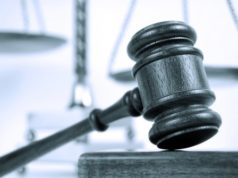 Protecting Our Future: Child Pornography Laws and their Crucial Role in Ensuring Child Safety
Protecting Our Future: Child Pornography Laws and their Crucial Role in Ensuring Child Safety
Introduction
Child pornography is a dark and distressing issue that continues to plague society, exploiting the innocence of children and leaving a long-lasting scar on their lives. To combat this heinous crime and protect our children, lawmakers worldwide have enacted stringent child pornography laws. These laws are essential in safeguarding children and ensuring their well-being. This article explores the significance of child pornography laws, their evolution, and their role in keeping children safe.
Understanding Child Pornography
Child pornography is the production, distribution, or possession of explicit images or videos involving minors engaged in sexual activities. These images can range from explicit photographs to videos, and their creation and circulation are a grave violation of a child’s rights and privacy.
1. The Evolution of Child Pornography Laws
Child pornography laws have evolved significantly over the years in response to changing societal norms and technological advancements. Historically, child pornography was not addressed adequately by legal systems, leading to insufficient protection for children. However, as awareness grew and the internet emerged as a platform for exploitation, governments worldwide recognized the need for comprehensive legislation.
A. Early Efforts
The initial efforts to combat child pornography primarily focused on punishing the producers and distributors of explicit material. These early laws laid the foundation for addressing child exploitation but often did not consider the plight of the victims themselves.
B. The Impact of Technological Advancements
With the rise of the internet, child pornography took on a new dimension. The ease of sharing and accessing explicit content online led to a surge in cases. Lawmakers had to adapt quickly to confront this challenge. Consequently, child pornography laws began to encompass not only the producers and distributors but also those who possessed and viewed such material.
C. International Collaboration
Child pornography is a global problem, and international cooperation became essential to combat its proliferation. The United Nations, along with various regional organizations, introduced conventions and treaties to facilitate cross-border efforts against child exploitation. One notable example is the Optional Protocol to the Convention on the Rights of the Child on the Sale of Children, Child Prostitution, and Child Pornography, adopted in 2000.
2. Key Components of Child Pornography Laws
Child pornography laws typically include several crucial components to address the multifaceted nature of the problem.
A. Age of Consent
One fundamental aspect is defining the age of consent. Laws clearly state that explicit material involving minors below a certain age is illegal. This age varies by jurisdiction but is typically set at 18 years old.
B. Production and Distribution
Child pornography laws target not only the creators of explicit content but also those who distribute or share it. This discourages the creation of such material in the first place and curbs its circulation.
C. Possession
Possessing child pornography is a crime in many jurisdictions. This provision is essential in preventing individuals from stockpiling explicit content involving minors.
D. Online Safety Measures
To combat the online dissemination of child pornography, many countries have enacted laws that require internet service providers (ISPs) and platforms to report and remove such content promptly.
3. The Role of Child Pornography Laws in Child Safety
Child pornography laws play a pivotal role in ensuring the safety and protection of children. Here are some ways in which they contribute to this crucial goal:
A. Deterrence
Child pornography laws act as a deterrent, discouraging individuals from engaging in the production, distribution, or possession of explicit material involving minors. The threat of severe legal consequences dissuades potential offenders.
B. Victim Support
Modern child pornography laws recognize that the victims of these crimes are often scarred for life. They provide support mechanisms such as counseling, therapy, and compensation to help survivors recover and rebuild their lives.
C. Educational Initiatives
Many countries have introduced educational programs to raise awareness about child pornography and its consequences. These initiatives inform parents, children, and communities about the dangers and signs of exploitation.
D. International Collaboration
Child pornography is a transnational issue, and effective measures require international cooperation. Child pornography laws facilitate collaboration between countries in tracking and prosecuting offenders.
E. Technological Advances
As technology continues to evolve, child pornography laws adapt to address emerging challenges. For example, some laws now encompass deepfake technology and virtual exploitation to stay ahead of offenders.
4. Challenges in Enforcing Child Pornography Laws
While child pornography laws are vital for child safety, they are not without challenges:
A. Jurisdictional Issues
The global nature of the internet makes it challenging to enforce child pornography laws effectively. Offenders can easily move content across borders, exploiting legal gaps.
B. Technological Complexity
Advancements in technology, such as encryption and anonymization tools, make it difficult to trace and prosecute offenders online.
C. Stigmatization of Victims
Despite efforts to protect victims, survivors of child pornography may still face stigma and discrimination, hindering their recovery.
D. Resources and Funding
Enforcing child pornography laws requires substantial resources, including trained personnel, technology, and legal infrastructure. Many countries struggle to allocate sufficient funding for this purpose.
Conclusion
Child pornography laws are indispensable in protecting children from exploitation and abuse. They have evolved over the years to address the challenges posed by changing societal norms and technological advancements. These laws play a pivotal role in deterring offenders, supporting victims, and raising awareness about the issue. However, enforcing child pornography laws remains a complex and ongoing challenge that requires international cooperation, technological adaptation, and continued advocacy for child safety. As we look towards the future, it is essential to remain vigilant in our efforts to protect the most vulnerable members of our society – our children.
Child pornography laws are written in the federal law books. They are federal laws because the trafficking of these images often constitute interstate commerce. Therefore, the federal government has jurisdiction over many cases of child pornography. Naturally, cases in which the unlawful material is trafficked within a state, then the state has jurisdiction.
States must meet the minimum federal standard of child pornography law but are entitled to add onto their statutes as they see fit. This article will only discuss the federal law because the facts of child pornography law are in common with all 50 states of the Union. The most basic legal definition of child pornography is a sexually explicit image or film of a person under 18 years of age. Child pornography can appear in all forms of printed and digital media. Child pornography law applies to indecent images of both heterosexual or homosexual sex.
It also does not matter if all of the actors in the production of the images are children or a combination of adults and children. Images of children engaging in bestiality also are applicable to the crime to child pornography law. Child pornography also applies to intentional public or private exhibition of a nude minor. They are all illegal.
Child pornography law does not apply to artistic depictions of nude youths. Drawings, sculptures, cartoons, and paintings do not apply to child pornography as long as they do not depict children involved in a sexually explicit act.
The images in question in most cases of child pornography are of a graphic nature; depicting real scenes of the unlawful sexual exploitation of a child under 18 years of age. Child pornography law is also applicable to simulated images of child pornography. Simulated child pornography is a controversial issue in the porn industry because it is unclear what constitutes simulated child pornography.
Federal child pornography law does not define what simulating child pornography means; therefore, many states have added provisions to clarify the definition of simulating child pornography. Some states have adopted child pornography laws that define simulated child pornography as any pornographic image depicting an adult that looks under 18 years of age. These state statutory provisions to the basic federal child pornography law are mostly ineffective because the jurisdiction of the Internet falls under the federal government.
Law and Technology in Child Pornography
There is ongoing debate between free-speech advocacy groups and the US Department of Justice on the proper definition of simulated child pornography. The DOJ argues that pornography that has adults of legal age portraying minors should be illegal because it glorifies pedophilia. Free-speech advocacy groups do not agree with that assertion stating that the actors are legally expressing themselves in a legal but distasteful manner.
Digitally altered images that simulate youthful appearance are also a topic of debate between the DOJ and free-speech advocacy groups. These images teeter on the edge of child pornography because they depict a pornography model of age but the images are digitally altered to appear younger than 18 years of age.
Even 18-year old that appear younger are subject to debate in determining the disputed definition of simulated child pornography in federal child pornography law. Rapidly changing technology changes existing definitions of laws and could lead to rigorous debate over the appropriate nature of a legal issue.






















